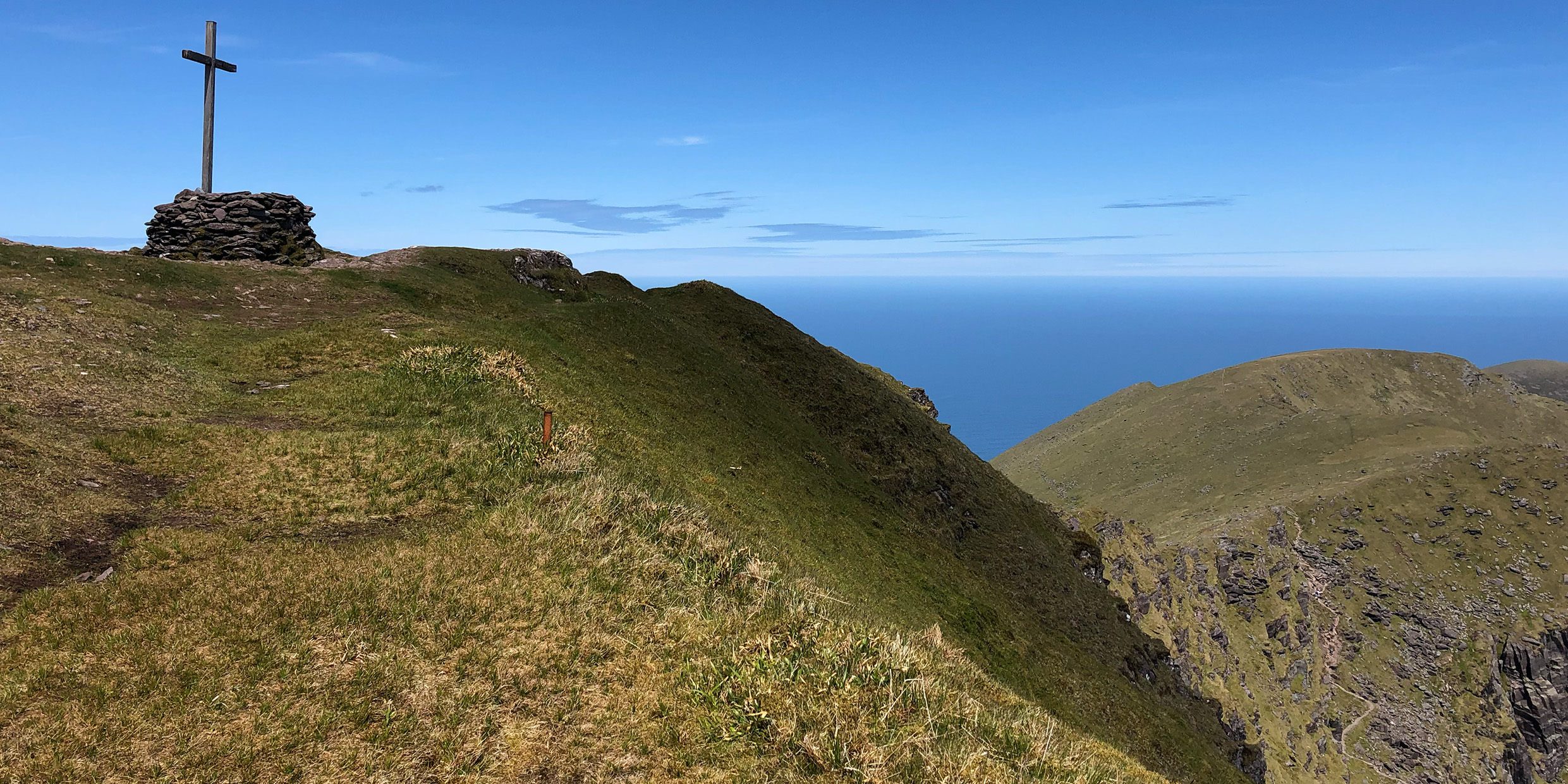Originally published 3 September 2002
COUNTY KERRY, IRELAND — Climbed Mount Brandon the other day. Ireland’s second-highest mountain. Named after Saint Brendan who had a hermitage on the summit in the 6th century. It was from a cove at the foot of the mountain that the saint set sail in an oxskin boat on a voyage that supposedly took him to Florida.
Well, no wonder. If you lived in the west of Ireland, you’d want to reach Florida, too, especially after forty days and nights of solitude on the cloudiest peak in Christendom.
Anyway, I climbed up there the other day for maybe the hundredth time. Up through a mist-filled defile and rain-slicked headwall. Reached the summit in a blowing gale. Joined a clique of other climbers huddled against the wind. All of us pleased as punch to be there.
Why? What pleasure in climbing a mountain in cold mist, huffing and puffing, legs quivering like bow strings?
Why? Because it’s there, that’s why. Because even in wind and rain, the mountain is majestic. Maybe the mountain is especially majestic in wind and rain.
Some years ago, the literary critic Marjorie Hope Nicholson wrote a book called Mountain Gloom and Mountain Glory showing how our attitude towards mountains changed in the 18th century, as reflected in English literature.
Writers of the preceding centuries spoke of mountains as “tumors” and “blisters” on the landscape, fearful places to stay away from. The idea that one might go to the mountains for aesthetic or spiritual reasons was simply not entertained.
In fact, many medieval Christian writers believed that mountains were not a part of the original creation at all, but were a consequence of Adam’s sin, or of Cain’s transgression, or (since mountains are not mentioned in the Bible before the story of Noah) part of God’s plan to punish the Earth by flood.
Then, according to Nicholson, within a few generations near the end of the 17th century, “mountain gloom” gave way to “mountain glory.” Poets and philosophers began celebrating mountains as places of grandeur. Climbers attempted summits in search of the sublime.
Mountains were no longer sources of fear, but instead inspired reverence and exhilaration. Summiting a peak evoked feelings of pride and satisfaction. Mountaineering became a sport and pastime. William Wordsworth walked the high ridges of the Lake District “awed, delighted, and amazed.”
What happened, says Nicholson, was the Enlightenment, and the beginnings of geology as a science. Experiential knowing replaced scriptures and tradition as sources of truth about nature. There was a shift of focus from the supernatural to the natural, from miracle to law, from unfounded fear to insatiable curiosity.
And nature, for the first time since antiquity, was seen as good, or at least not as intrinsically evil.
When Adam and Eve were cast out of the garden, they were in a sense cast out of nature itself. “Cursed is the ground for thy sake,” pronounced an angry deity in Genesis, and this is the theology of corrupted nature that John Milton describes in Paradise Lost. When Eve bit into the apple:
Earth felt the wound, and Nature from her seat,
Sighing through all her works, gave signs of woe.
The Enlightenment changed all that. Beginning with the artists of the Italian Renaissance, continuing through the Scientific Revolution, and coming to fulfillment in the Enlightenment, nature was rescued from its presumed fallen state and restored to glory. The mountains became again, in the poet Lord Byron’s words, “palaces of Nature.” He wrote:
Are not the mountains, waves, and skies, a part
Of me and of my soul, as I of them?
Is not the love of these deep in my heart
With a pure passion?
Perhaps Saint Brendan, as he ascended to his hermitage, exulted, as we do, in the grandeur of the mountain. Scholars of early Irish Christianity tell us that a theology of corrupted nature had not yet taken hold on the western fringe of Europe when Brendan was about. The God of the early Irish saints, like the gods of their Celtic ancestors, was immanent in every feature of the natural landscape. If so, then the mountains might have been for Brendan both glorious and holy.
Glorious and holy, too, for the 19th-century geologists who recognized in the steep-sided valleys on Mount Brandon’s flanks the first evidence of ice ages in Northern Europe. They tramped these ridges and glens undeterred by gloom, examining every glacial scratch, mapping every fault and folded stratum. We know from their journals that they thought the mountains beautiful.
Glorious and holy, too, for us modern pilgrims to Brandon’s summit, with our Vibram soles, fleece jackets, carbon-fiber hiking sticks, and pop-top plastic water bottles. Let the gales rage! Even the almost certitude of inclement weather is part of the appeal.



